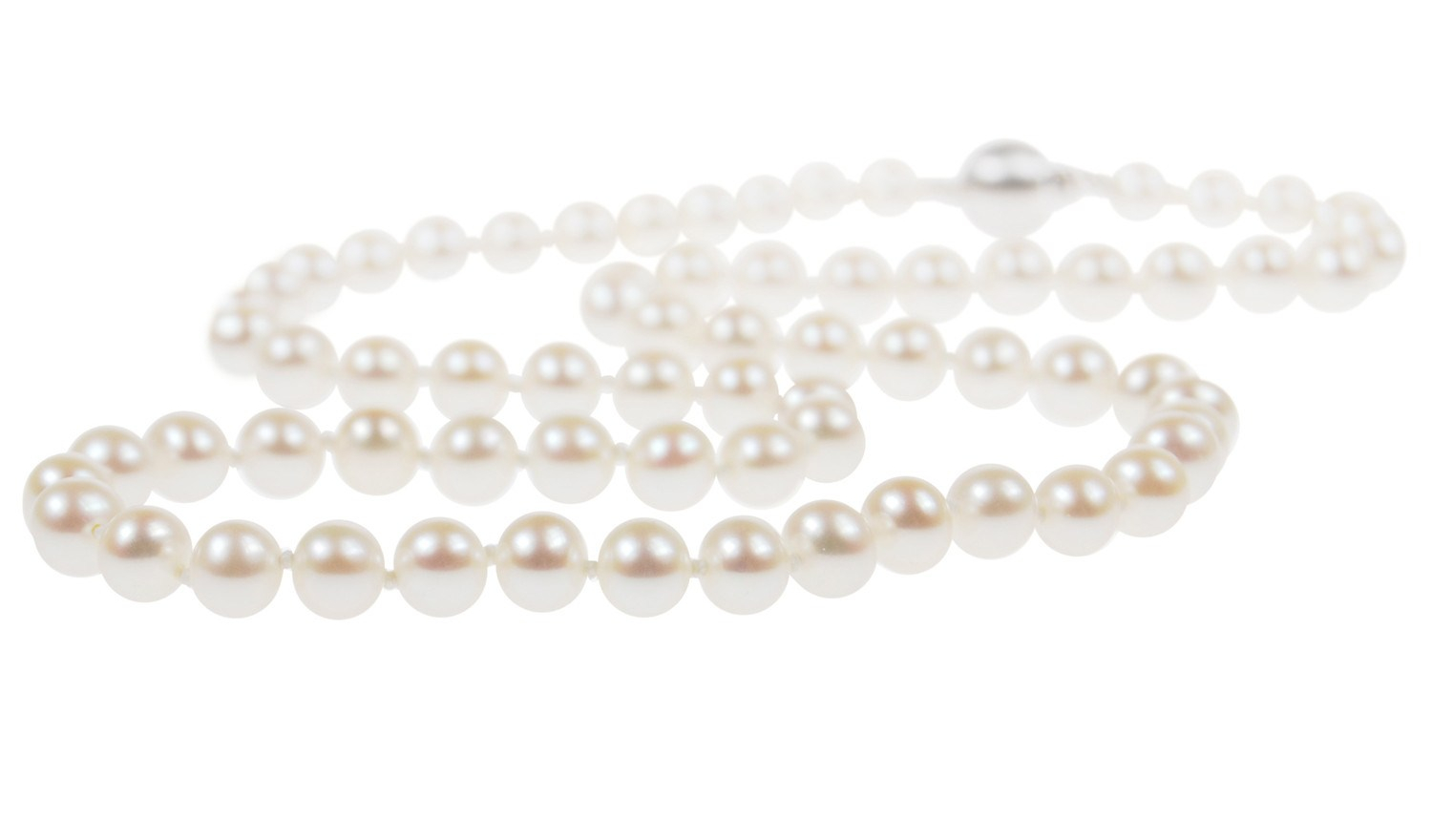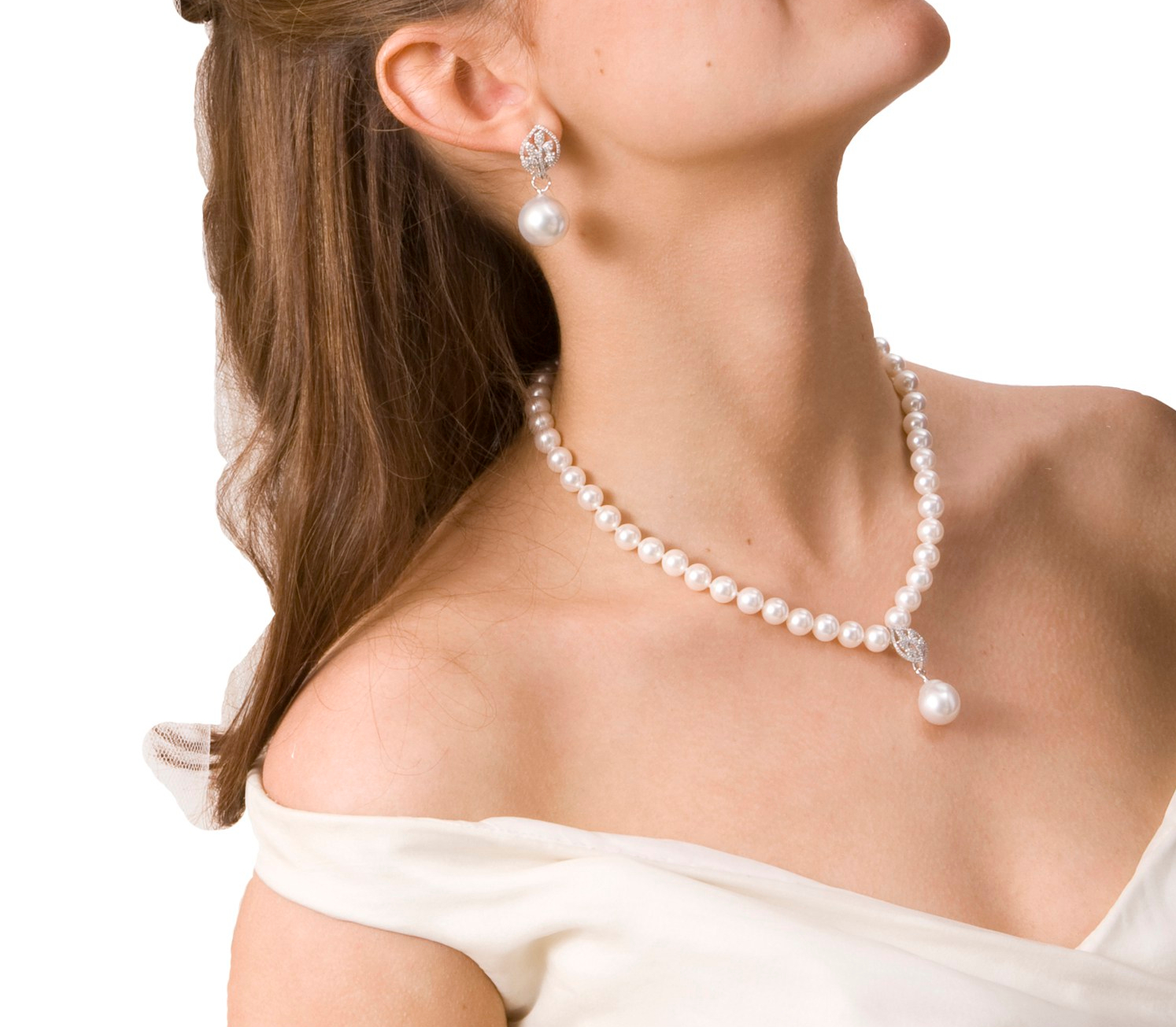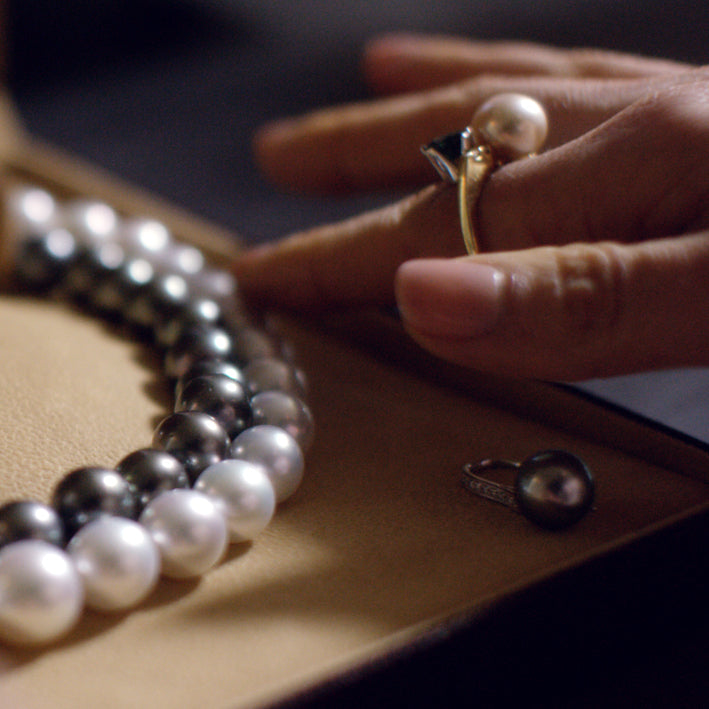
In the past the implants used for Cultured Akoya pearls used to be a mother of pearl nucleus bead, which was shipped from Mississippi where the Pig Toe mussel grew. This mother of pearl bead had the perfect specific weight needed, to make it difficult for the oyster to spit it out.
What is an acceptable nacre thickness?
Mikimoto, who was the first to cultivate pearls extensively, recommended that the irritant should be left in the host oyster for three years. At present the accepted time is 1 ½ years, which results in a good 0.5mm coating, the closer to 3 years the cultured pearl is left in the oyster the better.
How can you tell a thin nacre from thick nacre pearl?
Sadly economic pressures mean that in some places the irritant is left in the oyster for only six months leaving a nacre coating so thin that the pearl blinks when rolled on a flat white surface, allowing us to see the bead within, this thickness is as thin as a nail polish coat and will peel off in a couple of years, making the pearl worthless.
What colour are Akoya pearls?

The iridescent nacre of the Akoya pearl bearing oyster is naturally found in shades of pale bluish grey, hence the pearls from these oysters are normally born in pale blue, deep blue or pale blue/grey colours, rarely are they born in white with pale pink overtones. The bluish Akoya pearl colours are rarely found for sale in the market because for decades Akoya pearls have been bleached and /or pinked to render them the white to cream based colours that we have grown used to seeing.

In it important to remember that the first cultured Akoya pearls were considered “fake natural pearls” and had to imitate as best they could the colours normally found in natural pearls which ranged from white with pink overtones to pale gold pearls. Cultured Akoya pearls nowadays are generally found in all shades of white from very pure white through pale pink to golden tones.
Follow us on Instagram, Facebookand Twitter for more inspiration.



















